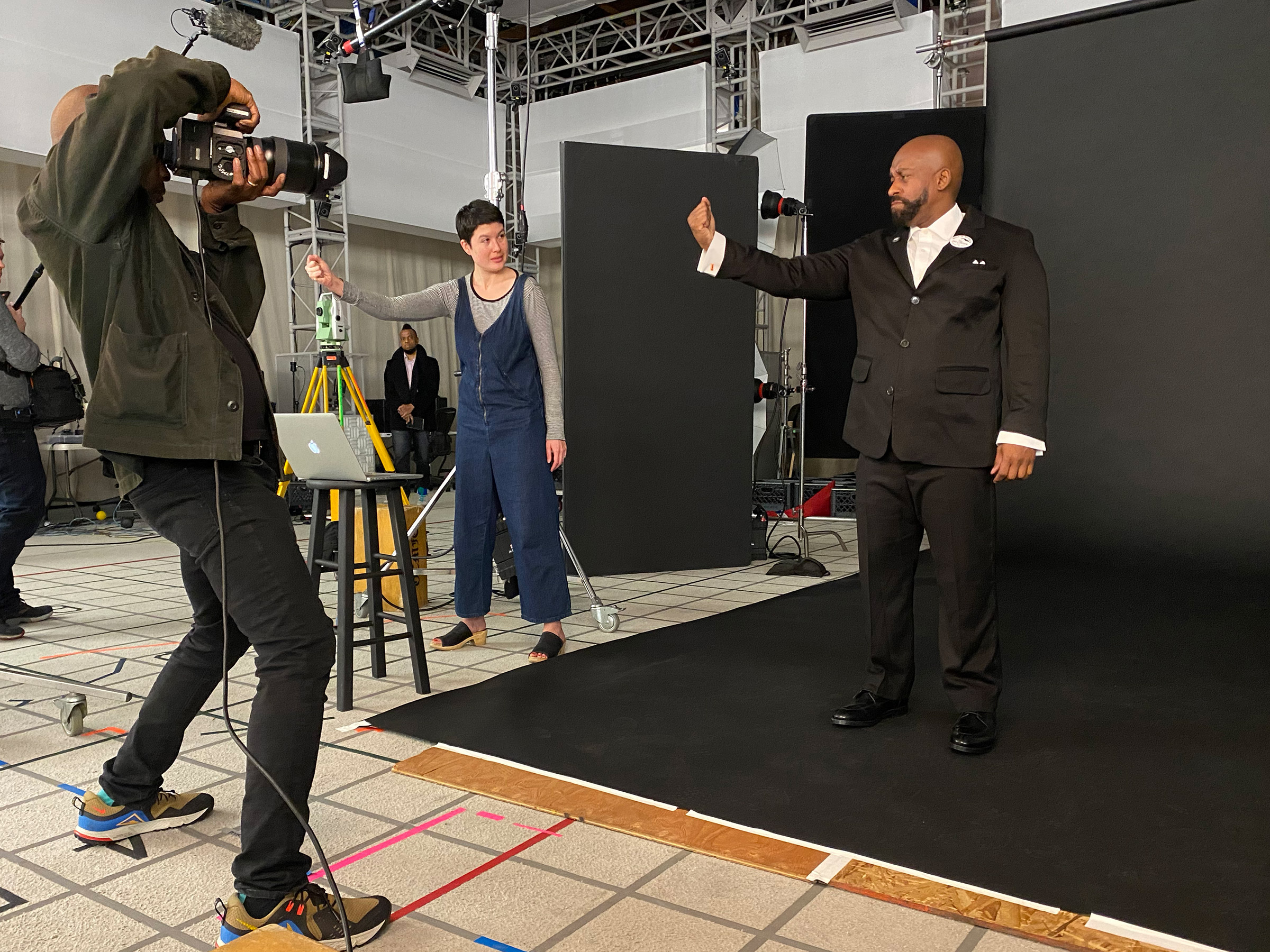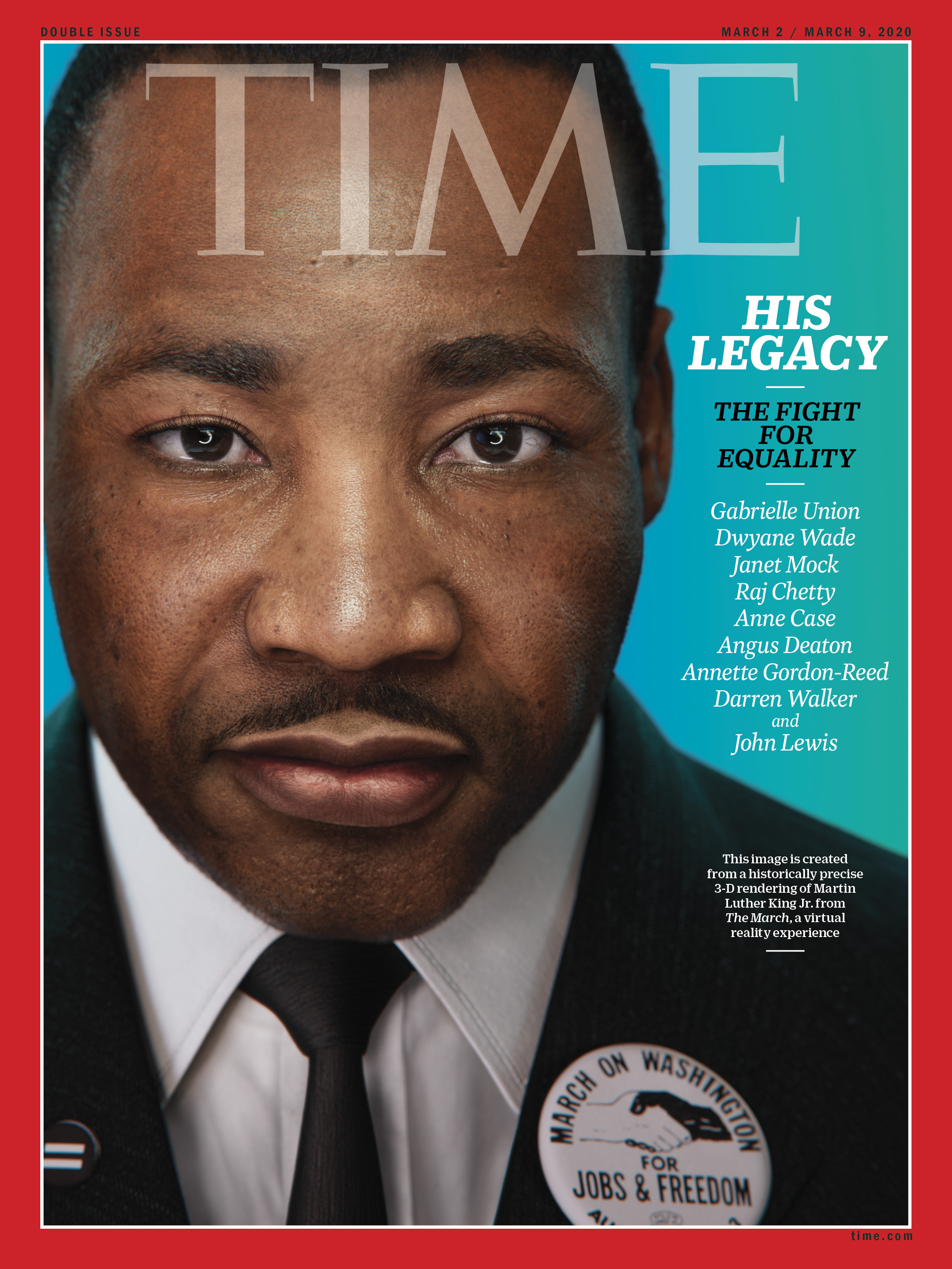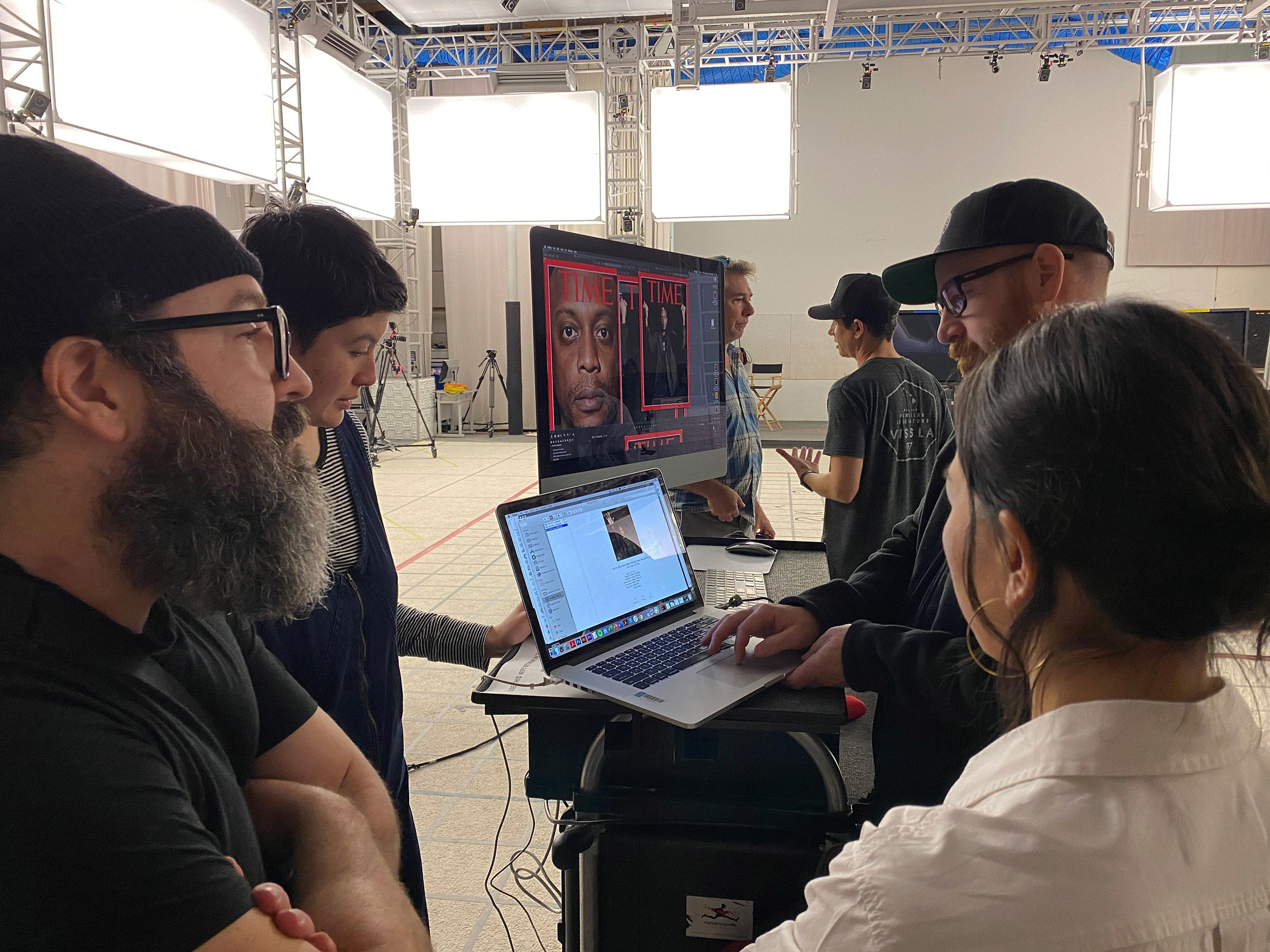
After TIME created a virtual-reality version of the 1963 March on Washington, we asked artist Hank Willis Thomas how he would translate that immersive experience onto a magazine cover.
In answer, at a Jan. 19 photo shoot in Los Angeles, Thomas—a co-founder of For Freedoms, a platform for artistic civic engagement—photographed actor Ty Brittingham, who served as a stand-in for King. A team of digital-human experts at visual-effects studio Digital Domain used those images as a foundation for posing and lighting the 3-D digital re-creation of King from The March—the work of a diverse team of VFX artists who were tasked with recreating the civil rights leader exactly as he looked on the day of Aug. 28, 1963. The two-dimensional rendering of that virtual reality figure became the March 2, 2020, cover.

The session itself was a learning process, says Thomas. “When we got approached to do this kind of groundbreaking portrait of one of our heroes, Martin Luther King Jr., who has been inspiring us for decades, I was super excited,” he says. “There were a lot of unknowns about the technology, about how you can do digital face mapping to produce images. It was a really amazing kind of learning experience for everyone involved.”
“The shoot wonderfully captured Hank’s collaborative approach to making art,” TIME’s director of photography Katherine Pomerantz said.
Step Into History: Learn how to experience the 1963 March on Washington in virtual reality
Thomas says he understood the need to convey both King’s standing as a historical figure and his legacy. The idea of bringing past movements into the present is one with which Thomas is familiar: One of his reimaginings of Norman Rockwell’s “Four Freedoms” paintings was featured on the Nov. 26, 2018, cover of TIME, and his latest project creates a similar sense of time warp.

From Feb. 28 to March 1, the For Freedoms team will be gathering artists, activists and other creators for a series of events in Los Angeles to emphasize the relationship between creative collaboration and civic action. Thomas hopes those events are just the beginning of a larger movement inspired by the “Wide Awakes” chapters that rallied behind Abraham Lincoln in the 1860 election, and that used public demonstrations and other tactics to encourage young Americans to be politically engaged.
“Our team has always been about collective projects and really aiming to bring people together and unite their culture and art,” says Christina Caputo, a For Freedoms adviser, “instead of kind of focusing on projects that divide them.”
This article is part of a special project about equality in America today. Read more about The March, TIME’s virtual reality re-creation of the 1963 March on Washington and sign up for TIME’s history newsletter for updates.
Want a print of TIME’s Martin Luther King Jr. cover? Find it here.
More Must-Reads from TIME
- Donald Trump Is TIME's 2024 Person of the Year
- TIME’s Top 10 Photos of 2024
- Why Gen Z Is Drinking Less
- The Best Movies About Cooking
- Why Is Anxiety Worse at Night?
- A Head-to-Toe Guide to Treating Dry Skin
- Why Street Cats Are Taking Over Urban Neighborhoods
- Column: Jimmy Carter’s Global Legacy Was Moral Clarity
Write to Anna Purna Kambhampaty at Anna.kambhampaty@time.com